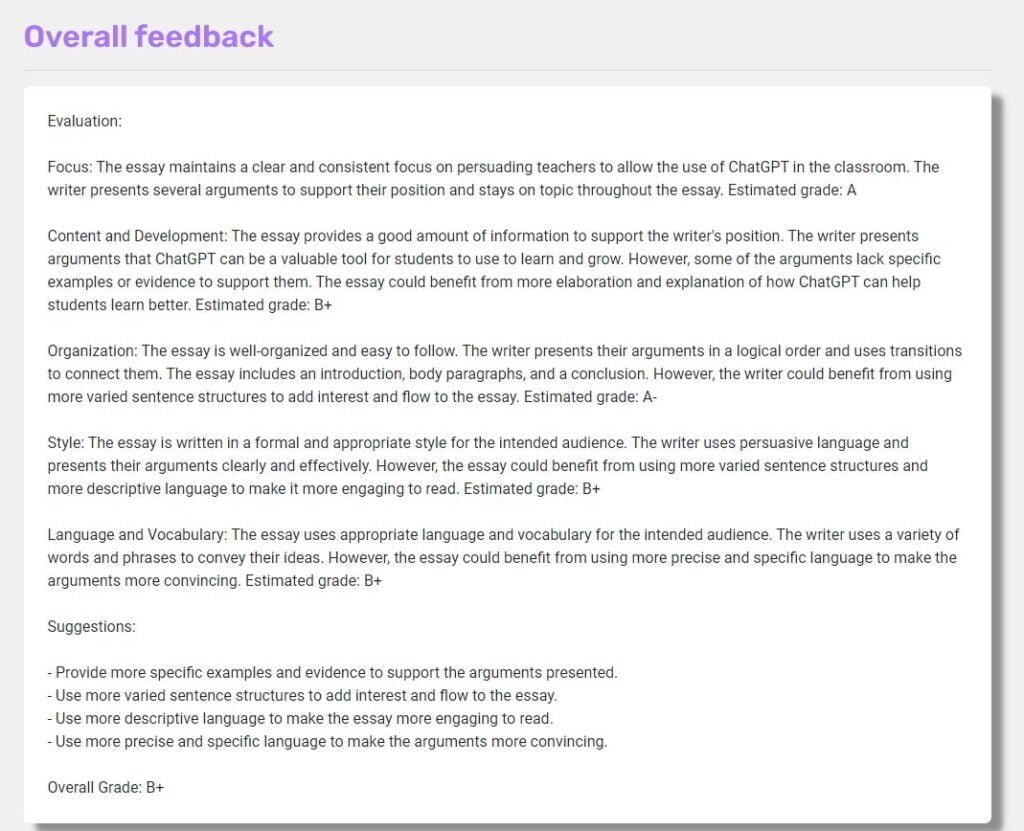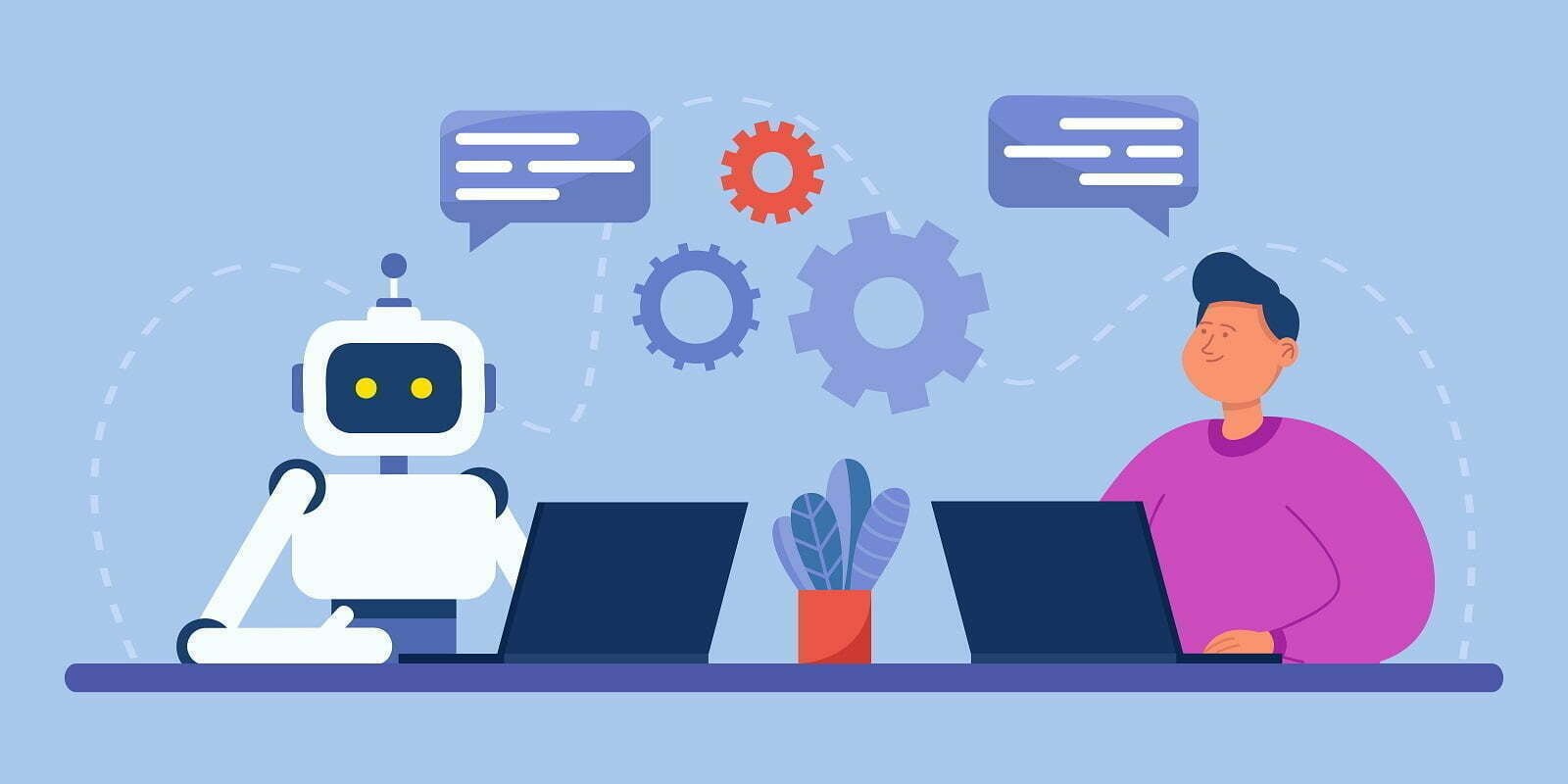One way that AI is changing the face of education is through the process of assessing student papers.
Teachers can save time and effort by using AI grading tools to evaluate papers more accurately and rapidly. The advantages, functionality, and complexity of AI-powered grading tools are discussed in this article.
Introduction to AI Grading Tools
Artificial intelligence (AI) grading tools are software applications that employ machine learning algorithms to evaluate student work.
Essays, multiple-choice tests, and short answer questions are just some of the formats that these technologies can handle while still giving the impression that they were graded by a human.
To forecast the quality of new papers, the AI grading tools learn from a dataset of previously rated papers.
Benefits of AI Grading Tools
The use of AI grading tools offers several benefits for teachers, students, and schools.
Saves Time
Grading papers is a time-consuming task that can take hours, if not days, to complete. With AI grading tools, teachers can grade papers in a fraction of the time it takes to do it manually.
This frees up time for teachers to focus on other aspects of teaching, such as lesson planning, curriculum development, and student engagement.
EssayGrade.ai

Consistency and objectivity
One of the biggest challenges of manual grading is ensuring consistency and objectivity. AI grading tools eliminate this challenge by providing an objective and consistent standardized grading system. This ensures that all students are graded fairly and impartially.
Immediate Feedback
AI grading tools provide immediate feedback to students, allowing them to see where they went wrong and how they can improve. This feedback helps students learn from their mistakes and improve their performance in future assignments.
Also, AI grading tools save teachers time by automating the grading process, so they can spend more time giving students personalized feedback and help. This can help both students and teachers learn more efficiently and effectively.
Improved Learning Outcomes
AI-powered tools for grading can help students learn better by giving teachers information about how their students are doing. This information can be used to find out where students are having trouble and give them specific help to get better.
How AI Grading Tools Work
AI grading tools use machine learning algorithms to evaluate student work. The algorithms are trained on a dataset of graded papers and use this information to make predictions about the quality of new papers. The algorithms are designed to identify patterns in the data and use these patterns to make predictions.
The AI tools that grade papers look at things like grammar, spelling, punctuation, and content, among other things. Natural language processing (NLP) is used by the tools to look at the content of the paper and find the main themes and ideas.
The AI grading tools provide a score for each paper that is based on the criteria that have been evaluated. The score is then converted into a grade based on the grading scale used by the teacher.
Challenges Associated with AI Grading Tools
While AI grading tools offer several benefits, some challenges are associated with their implementation.
Limited Accuracy
AI grading tools are not perfect and can make mistakes. The accuracy of the grading tools depends on the quality of the data used to train the algorithms. If the data is biased or limited, the grading tools may not be accurate.
Therefore, it is important to ensure that the data used to train the algorithms is diverse and representative of the population being graded. Additionally, ongoing monitoring and updates to the grading tools may be necessary to address any biases or limitations that are identified.
Lack of personalization
AI tools for grading papers are made to do so based on a standard set of criteria. This means that they may not consider each student’s individual strengths and weaknesses.
Therefore, educators need to use AI grading tools as a supplement to their grading process rather than relying solely on them.
Additionally, providing personalized feedback to students can help address their specific areas of improvement and promote academic growth.
Cost
AI grading tools can be expensive to implement, especially for smaller schools and districts. The cost of the tools may outweigh the benefits, making it difficult for schools to justify the investment.
Conclusion
AI grading tools have the potential to revolutionize the way teachers grade papers.
They offer several benefits, including saving time, providing consistency and objectivity, and improving learning outcomes. However, there are also some challenges associated with their implementation, such as limited accuracy, a lack of personalization, and cost.
Despite these challenges, the benefits of AI grading tools make them a promising tool for teachers to consider.
As with any new technology, it’s important to carefully think about how AI-powered grading tools fit into the bigger goals of education.
AI tools for grading shouldn’t be seen as a way to get rid of teachers. Instead, they should be seen as a way to help teachers do their jobs better and make grading faster and more accurate.
Frequently Asked Questions
Are AI grading tools reliable?
These tools employ sophisticated algorithms to assess student responses against a set of predefined criteria. However, their reliability can vary depending on the complexity of the assignment and the nuances of the subject matter. For instance, grading essays or creative writing tasks remains challenging for AI due to the subjective and varied nature of such content. Continuous advancements in natural language processing (NLP) and machine learning are enhancing their capabilities, yet human oversight remains essential to ensure accuracy and fairness.
Can AI grading tools be used for all types of assignments?
AI grading tools are most effective for structured and objective assignments such as multiple-choice tests, fill-in-the-blanks, or basic mathematical problems. They are less effective for subjective, open-ended assignments like essays, creative writing, or complex problem-solving tasks. The effectiveness of AI grading also hinges on the quality of the input data and the tool’s ability to interpret student responses accurately. Educators often use AI tools in conjunction with human grading for more subjective assignments to ensure a comprehensive and fair evaluation.
What are the benefits of AI grading?
AI grading offers several benefits:
- Time Efficiency: Automates grading for straightforward tasks, freeing up teacher time for more personalized instruction.
- Consistency: Provides uniform evaluations, minimizing subjective bias.
- Immediate Feedback: Offers instant results, allowing for timely interventions.
- Data-Driven Insights: Generates valuable data on student performance, aiding in tailored teaching strategies.
- Scalability: Facilitates the handling of large class sizes effectively.
Will AI grading tools replace teachers?
AI grading tools are not designed to replace teachers but to augment their capabilities. While AI can efficiently handle certain aspects of grading, it lacks the nuanced understanding, empathy, and expertise that teachers bring to the educational process. AI tools serve as aids that can streamline administrative tasks, allowing teachers to focus more on interactive and personalized teaching methods, critical thinking facilitation, and emotional and social support for students.
How much do AI grading tools cost?
The cost of AI grading tools varies widely based on factors like functionality, scale, and provider. Some basic tools might be available at low cost or even for free, especially those integrated into commonly used educational platforms. More sophisticated systems, offering a broader range of grading capabilities and analytics, could require a significant investment. Schools and educational institutions often need to weigh the benefits against the costs to determine the viability of implementing these tools.
Will the use of AI grading tools impact student engagement?
The use of AI grading tools can positively impact student engagement, but with caveats. Immediate feedback from AI tools can help students quickly identify areas for improvement and adjust their learning strategies accordingly. This instant feedback mechanism often motivates students to engage more actively with the learning material. However, it is crucial to balance AI feedback with human interaction. Personalized feedback from teachers, discussions, and human-led evaluations are essential for maintaining a high level of student engagement and catering to the diverse emotional and educational needs of students.









Recent Comments